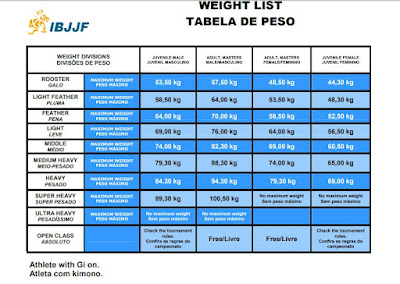Plateaus in Brazilian Jiu Jitsu and how to overcome them.
The stagnation or feeling of not advancing is a situation that is experienced in Brazilian jiu jitsu throughout the different stages of the path to the black belt but that even after achieving this belt will continue to appear.
Because stagnation is a situation that does not depend on the level you are at but on other factors.
It is also a situation that not only occurs in the practice of Brazilian Jiu Jitsu but in all sports activities.
In this article we want to analyze some of the factors that produce this phenomenon and offer recommendations that help overcome these stages that in some people can cause abandonment.
If you pay attention to these factors it will be easier for you to get over the feeling and continue to enjoy endless learning in the soft art.
Tips to overcome stagnation in Brazilian Jiu Jitsu.
The first step is to analyze the situation and define what are the reasons that make you feel that you are not moving forward.
For example, that the techniques you want to do do not come out or that they begin to defend the movements.
In the first case you will feel frustrated for not being able to apply what you are practicing.
In the second you will feel that the techniques that worked for a while stop working.
First of all it is important to understand that even if you practice a technique it does not mean that you can apply it directly in a combat situation unless you perform situational sparring starting in that position or at least close to it.
For example, if you want to apply a choke from the back, you must first pass your opponent's guard and reach the back or make a transition that allows you to reach that position.
So if you have problems applying the technique that you have been practicing, it is not a question of the technique as such, but of the way you arrive at the situation to apply it.
As I said before, one way to more objectively evaluate progress is to do situational combat.
Another very important strategy is to train natural sequences and not isolated techniques.
In this way you will be able to advance more efficiently.
If you want to introduce new techniques you should always try to learn how they fit into different positions and moments and see what distractions, combo attacks and other resources will allow you to put it into practice.
All of the above is also valid for another very common way of feeling stagnation in Brazilian jiujitsu.
These are blue and more advanced belts who see how their usual techniques stop working and that even less graduated companions begin to defend their attacks effectively.
In the first instance, it must be understood that this is the most logical and natural, since progressively the opponents know our game and look for solutions to defend our attacks.
Understanding this, we must study these defensive reactions to introduce new techniques that generate openings again and allow chaining attacks and transitions.
In this sense, the feedback from the combats and the laboratory work will be very important.
By filming your fights you will be able to see unnoticed aspects that can help you find solutions.
Also through laboratory training you will be able to see different reactions to your attacks and slowly and efficiently study possible solutions.
Once you add new steps in your sequences, it's time to practice and try to put them into practice again.
Once again, feedback and measurement of results is important.
As I have said in other articles, tracking your training has an importance that is not generally recognized.
Keeping some kind of diary with simple notes is of great help to be able to evaluate your progress, even in a very basic way, such as recording the sensations that the training has left you.
However, in order to be more objective and to be able to recognize in a more efficient way the overcoming of that sensation of stagnation, it will be of great help if you set goals before each training session and carry out some type of planning.
In this way you will arrive at each training session with an objective and with some specific criteria to evaluate progress.
Defending a certain guard by quantifying the passes that they make you and the scrapes or finishes that you can execute are, for example, some objectives and metrics that you can use.
So far these reflections on this phenomenon so frequent in our world and our recommendations to overcome it.
As always thanking you for your time to read them and your comments and suggestions.
Posted originally by Mario Rodriguez on December 15, 2019 at BJJ Terrassa

Comments
Post a Comment